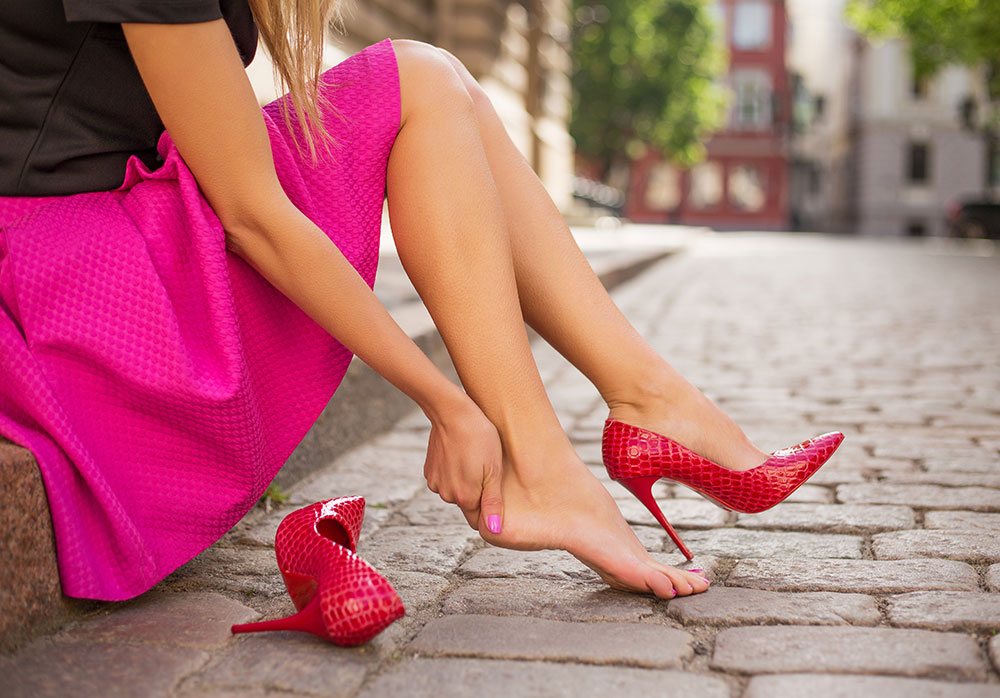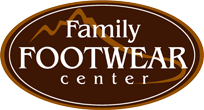The Best Shoes to Wear for Blisters | Expert Guide
Posted by Cara Spindler on Dec 20th 2023

The Perfect Fit: Choosing the Best Shoes for Blisters
By Cara Spindler
Blisters on the feet can be excruciatingly painful and they can easily disrupt your daily activities. Whether you are an athlete, a hiker, or simply someone who spends a lot of time on their feet, finding the right footwear is crucial to help prevent and alleviate this common problem. In this blog, we will explore the best shoes for people who suffer from blisters on their feet, helping them find the perfect fitting shoes for both comfort and pain relief.
The prevalence of foot blisters can vary widely depending on a number of factors such as; activity level, footwear choices, and environmental conditions, which can all be controlled to one degree or another.
Understanding Blisters
Before delving into shoe recommendations, it is essential to understand why blisters occur. Blisters are caused by friction, moisture, and pressure on the skin. When your feet rub against the inside of your shoes, the friction generates heat and pressure, leading to fluid-filled blisters. To avoid blisters, you need shoes that minimize all three of these factors, as well as a few others.

The main factors that contribute to the formation of foot blisters include:
- Friction: Friction is one of the primary causes of foot blisters. When your foot rubs against a surface such as the inside of a shoe or sock, it can create friction, which can lead to the top layers of skin separating from the lower layers. This separation creates a space where fluid accumulates, forming a blister.
- Heat: Excessive heat, especially in combination with friction, can increase the likelihood of blister formation. Hot and humid conditions can make your feet sweat more, increasing moisture in your shoes and making your skin more susceptible to friction-induced blisters.
- Moisture: Moisture softens the skin and makes it more vulnerable to friction. Sweating excessively or walking in wet conditions can increase the chances of blisters developing on your feet. Damp socks and shoes can exacerbate this problem.
- Ill-fitting Footwear: Wearing shoes that are too tight or too loose can lead to blisters. Tight shoes can create pressure points that cause friction, while loose shoes can allow your foot to slide around inside, leading to friction in different areas.
- Rubbing or Chafing: Any foreign object or rough seam inside your shoes can rub against your skin and cause blisters. This includes seams, tags, or folds in your socks, as well as foreign objects like gravel or sand.
- Prolonged Activity: Engaging in activities that involve repetitive foot movements, such as long-distance running, hiking, or walking, can increase the likelihood of blisters. The longer you are active, the more friction your feet may experience.
- Poor Foot Mechanics: Issues like overpronation (excessive rolling of the foot inward) or supination (insufficient inward roll) can lead to uneven pressure distribution and friction in certain areas of the foot, increasing the risk of blisters.
- Inadequate Foot Care: Failing to properly care for your feet, such as trimming your toenails too short or not moisturizing dry skin, can make your feet more susceptible to blisters.
- Pre-existing Medical Conditions: Certain medical conditions, such as diabetes or autoimmune diseases, can affect the health of your skin and make you more prone to blister formation.
How to Prevent Foot Blisters
To prevent foot blisters, it is essential to wear comfortable, well-fitting footwear. It is also important to keep your feet clean and dry as you go through your active day. We recommend wearing moisture-wicking socks made with a blend of Merino Wool, from Smartwool, or Darn Tough socks, which are made of 100% wool and made in Vermont.
Be sure to address any Foot Mechanics issues you may have, or any pre-existing foot conditions with the guidance of a healthcare professional. Additionally, you can apply blister-prevention products like moleskin or blister pads to areas prone to friction.
How to Choose the Right Shoes to Wear With Blisters
- Proper Fit: One of the most critical factors in preventing blisters is wearing shoes that fit correctly. Avoid shoes that are too tight or too loose, as they can cause friction and rubbing. Opt for shoes that offer a snug fit without being overly constricting. Many local independent shoe stores offer professional fitting services to ensure you get the right size.
- Material Matters: The material of your shoes plays a significant role in preventing blisters. Look for shoes made from breathable and moisture-wicking materials, such as mesh, leather, or synthetic fabrics. These materials help keep your feet dry and reduce the likelihood of friction-induced blisters.
- Cushioning and Support: Good cushioning and arch support are crucial for preventing blisters. Shoes with adequate cushioning can absorb shock and reduce the impact on your feet, while proper arch support helps distribute pressure evenly. Consider insoles or orthotic inserts if your shoes lack sufficient cushioning or support.
- Seamless Construction: Shoes with seamless interiors are less likely to cause friction and blisters. Check for shoes that have minimal stitching or seams on the inside. Seamless sock liners can also provide extra comfort.
- Break Them In: New shoes often require some breaking in. Wear your new shoes for short periods initially, gradually increasing the duration as they adapt to your feet. This can help prevent blisters caused by stiff or rigid shoes.
Best Shoe Types
- Running Shoes: Running shoes are designed with ample cushioning and support, making them an excellent choice for blister prevention. They come in various styles to accommodate different foot shapes and pronation types.
Men's Running Shoes
Women's Running Shoes - Hiking Boots/Shoes: Hikers and outdoor enthusiasts should opt for hiking boots or shoes that offer ankle support and durable, moisture-wicking materials. These shoes are designed to withstand long walks and challenging terrains.
Men's Hiking Boots and Shoes
Women's Hiking Boots and Shoes - Athletic Shoes: For sports or physical activities, consider athletic shoes tailored to your specific activity. Basketball shoes, tennis shoes, or cross-trainers are built with features that cater to different movements and offer enhanced support.
Men's Athletic Shoes
Women's Athletic Shoes - Comfortable Everyday Footwear: In your daily life, choose comfortable footwear with arch support and cushioning. Brands like Skechers, New Balance, and Clarks often offer a wide range of comfortable shoes suitable for various occasions.
- Orthopedic Shoes: If you have chronic foot issues or require specialized footwear, orthopedic shoes may be the best solution. These shoes are custom-made or designed to address specific foot conditions, offering the utmost comfort and support.
Conclusion
Blisters on the feet can be a painful and frustrating problem, but the right pair of shoes can make all the difference. Prioritize comfort, fit, and material when selecting shoes to prevent blisters. Remember that everyone's feet are unique, so it may take some trial and error to find the perfect pair. Do not hesitate to consult with a podiatrist or footwear specialist, such as a Certified Pedorthist like Gretchen Lima at out Manchester Vermont store location, for personalized advice. With the right shoes, you can enjoy blister-free comfort and maintain an active and pain-free lifestyle.
It is important to note that foot blisters are a common and generally minor issue that many people experience at some point in their lives, but severe or chronic cases may require medical attention, and you should contact your doctor.
*The information is provided for educational purposes, and is not a substitute for medical advice from your doctor.


